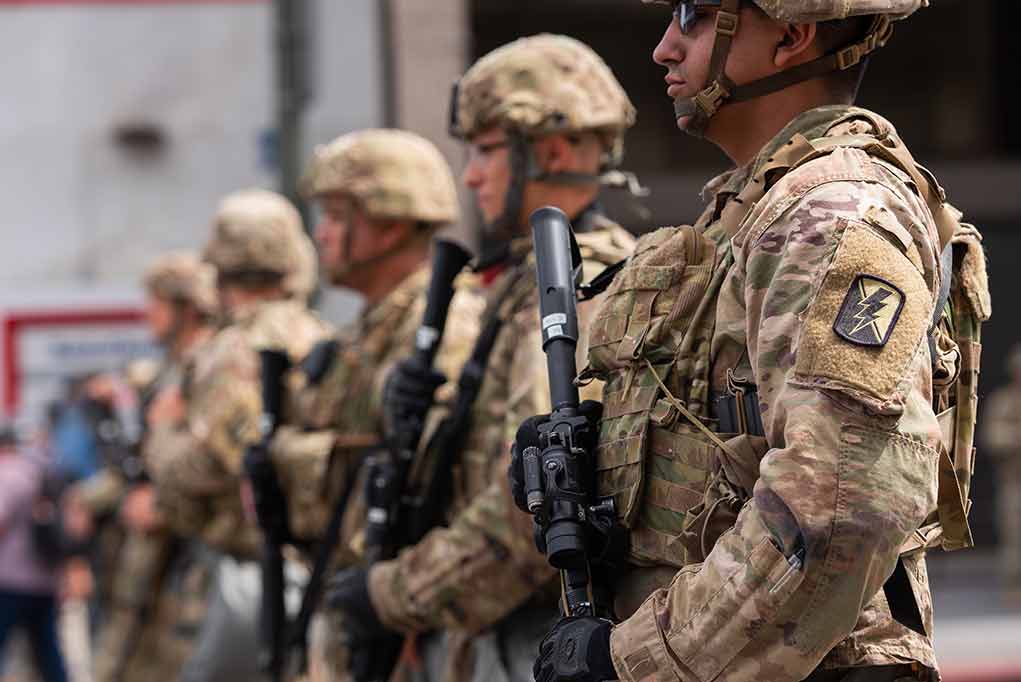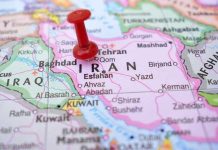
U.S. military forces are now authorized to detain illegal migrants crossing into newly designated military zones along the southern border, marking a significant escalation in the Trump administration’s border security strategy.
Key Takeaways
- The Pentagon has established a second military zone near El Paso, extending Fort Bliss about 63 miles along the border
- This follows the earlier designation of a 60-foot-wide strip along 200 miles of the New Mexico-Mexico border as military territory
- U.S. troops can now temporarily detain migrants who enter these zones until Border Patrol arrives
- Nearly 8,000 active-duty military personnel are deployed along the southern border, supported by helicopters, spy planes, and Navy warships
- Several migrants have already been charged with trespassing on military property after crossing into these zones
Military Zones Expanding Along Southern Border
The Department of Defense has significantly expanded its footprint along the U.S.-Mexico border by establishing a second military zone as part of President Trump’s enhanced border security initiative. The new zone extends Fort Bliss territory approximately 63 miles along the southern border of Texas near El Paso. This development follows the earlier designation of a 60-foot-wide strip along 200 miles of the New Mexico-Mexico border as military property, effectively creating a continuous military presence across a significant portion of the southwestern border region.
“The establishment of a second National Defense Area increases our operational reach and effectiveness in denying illegal activity along the southern border,” said Air Force Gen. Gregory Guillot, the head of Northern Command, in a statement.
— Federation for American Immigration Reform (@FAIRImmigration) April 25, 2025
Enhanced Military Authority at the Border
The new designation fundamentally changes the role of military personnel at the border. Troops stationed in these zones now have the authority to temporarily detain migrants who cross into the military territory, search them, and provide medical assistance if needed before transferring them to federal law enforcement. This represents a significant shift from the previous policy, where military personnel had more limited powers regarding migrant encounters. Already, more than two dozen people have been charged with trespassing on the New Mexico National Defense Area, which is part of Fort Huachuca in Arizona.
“This is the second area in which Joint Task Force – Southern Border service members who are already detecting and monitoring through stationary positions and mobile patrols nearby can now temporarily detain trespassers until they are transferred to an appropriate law enforcement entity,” Said Air Force Gen. Gregory Guillot stated.
The El Paso defense area extends about 53 miles east to Fort Hancock and is being monitored by Stryker armored combat vehicles from Fort Carson, Colorado. Military personnel are actively placing warning signs to alert individuals that they are entering a military installation, where different legal standards apply compared to civilian land. This creative approach allows the administration to utilize military resources for border security while navigating restrictions on military involvement in domestic law enforcement.
Comprehensive Military Deployment
The Trump administration has deployed approximately 6,600 soldiers and Marines along the southwest border as part of Joint Task Force-Southern Border. The Fourth Infantry Division from Fort Carson forms a significant part of the ground force, with units patrolling in armored vehicles along the newly designated zones. This deployment represents a continuation and expansion of military support at the border that initially began in 2018 during President Trump’s first term. The current operation includes nearly 8,000 active-duty troops, surveillance aircraft, helicopters, and naval assets.
The expanded military footprint is part of a strategic effort to address the ongoing crisis at the southern border by utilizing federal resources more aggressively. The land in New Mexico was acquired by the Army from the Department of the Interior for a three-year period as part of the Roosevelt Reservation. By designating these areas as military zones, the administration has created a framework that allows for more direct military involvement in border security operations while maintaining compliance with legal restrictions on using military forces for domestic law enforcement.











